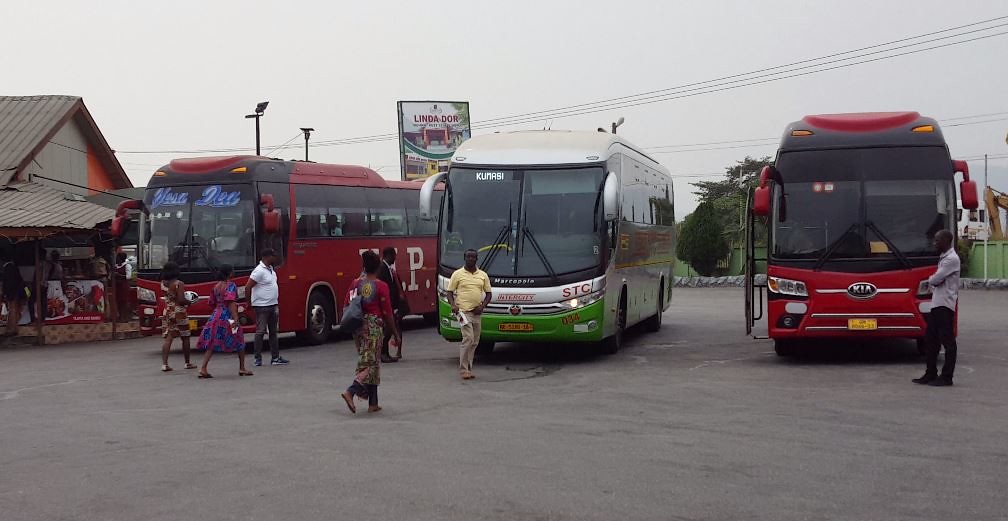The Mirror's Health , Lifestyle and Fashion

Rest stops, road safety
Our topic today looks at that one facility, which has a bearing on driving time and rest- the rest stop.
Advertisement
This topic is also important because I have just had the opportunity to take part in the eight-day Citi Heritage Caravan across Ghana, and I can attest that our rest stop situation requires another look.
As tempting as it is on a road trip to stay behind the wheel for those extra few hours in order to get to your destination as quickly as possible, driving for long stretches of time without a break can be really dangerous.
Driving takes a lot of concentration, skill, and control that is difficult to maintain for hours on end, making frequent stops invaluable to maintaining a high quality of safe, efficient driving.
As a general rule, it's best to take a break of at least 15 minutes every two hours, and to not drive for more than eight hours in a day, to ensure you stay alert and avoid the associated risks of driving for too long without a rest.
These risks include falling asleep at the wheel, running out of fuel, and reduced reaction times.
Although it sounds like a major delay to your journey, regular, short breaks are actually only likely to add an hour tops to your trip, and if you schedule them before you set off, it shouldn't be a hindrance at all.
To help you get to grips with why this topic is so important to anyone facing a long drive, we've put together a guide to take you through how often you should stop on a road trip, reasons why some might need to stop more often than others, and the potential risks of not stopping.
Meanwhile, a bit about the rest stop.
A rest area is a public facility, located next to a large thoroughfare such as a motorway, expressway, or highway, at which drivers and passengers can rest, eat, or refuel without exiting onto secondary roads.
Other names include: motorway service area (UK), services (UK), travel plaza, rest stop (US), service area, rest and service area (SA), resto, service plaza, lay-by, and service centre. Facilities may include park-like areas, fuel stations, public toilets, water fountains, restaurants, and dump and fill stations for caravans.
A rest area with limited public facilities is a lay-by, parking area, scenic area, or scenic overlook. Truck drivers often park in lay-bys to take mandatory breaks.
Along some highways and roads, they are known as wayside parks, roadside parks, or picnic areas.
The standards and upkeep of service station facilities vary by jurisdiction. Service stations have parking areas allotted for cars, trucks, articulated trucks, buses and caravans. (By now most of you wish I am talking about our dear Ghana, right. Lol!)
Now, where they exits, many government-run rest areas tend to be located in remote and rural areas where there are practically no fast food nor full-service restaurants, fuel stations, hotels or other traveller services nearby.
The locations of these remote rest areas are usually marked by signs on the motorway; for example, a sign may read, "Next Services 25 miles", or "Next Rest Stop 10 km".
For me one good thing about Rest Stops is that driving information is usually available at these locations, such as posted maps and other local information, along with public toilet.
Some rest areas have visitor information centres or stations with staff on duty. There might also be drinking fountains, vending machines, pay telephones, a fuel station, a restaurant/food court, or a convenience store at a service area.
Some rest areas provide free coffee for travellers which are paid for by donations from travellers and/or donations from local businesses, civic groups and churches. Many service stations provide Wi-Fi access and have bookshops.
Many rest areas have picnic areas. Service areas tend to have traveller information in the form of so-called "exit guides", which often contain very basic maps and advertisements for local motels and nearby tourist attractions.
Some rest areas have the reputations of being unsafe with regard to crime, especially at night, since they are usually situated in remote or rural areas and inherently attract transient individuals such as the homeless and truck drivers.
Especially for our long distance drivers, rest stops exist to keep you and your passengers safe. They may not be well-developed in Ghana but we can still observe them when they are on our route. Let’s save life on our roads!




